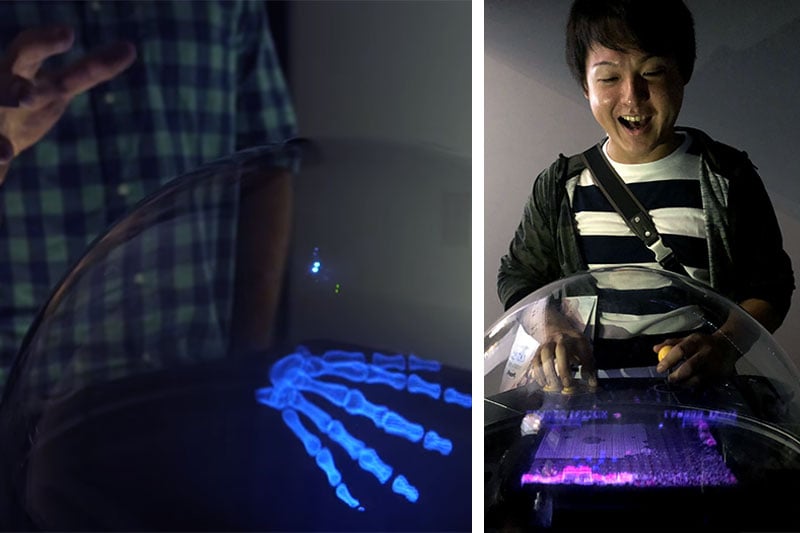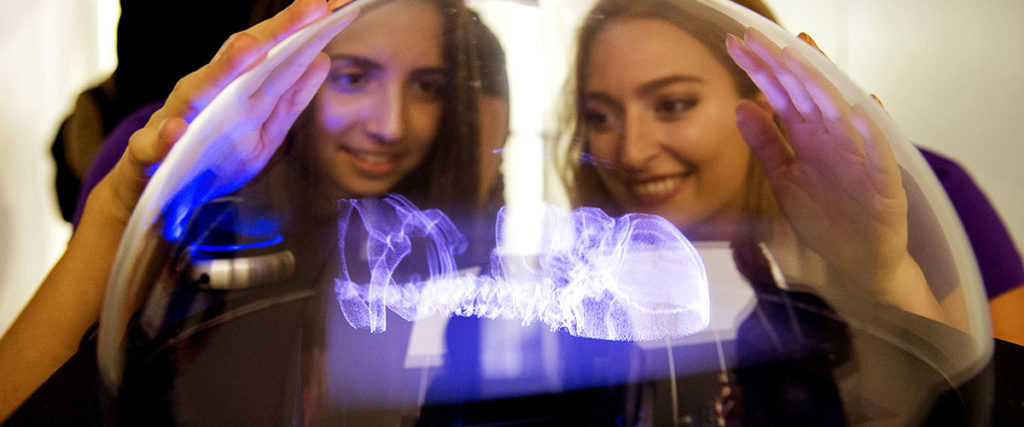Straight out of science fiction, Australian developer Voxon Photonics has created a 3D holographic display that’s changing how we communicate, teach, entertain, display medical images – and more!
Born out of a love for Star Wars, a shoestring budget, and a willingness to entertain crazy ideas, Australian tech firm Voxon Photonics, founded by two enterprising engineers, has created an incredible piece of technology: a 3D holographic display they say will change the face of communications as we know it. Partnering with Ericsson, Version, Harvard University and MIT, the firm has already made big waves in a number of industries and is pushing ahead with applications in digital advertising, education, medical imaging, 3D gaming and communications. With high-speed 5G networks fast becoming a reality for the average consumer, 3D communications are finally possible – just imagine being able to FaceTime your kids in 3D, silly expressions and all! We sat down with CEO and co-founder Will Tamblyn to discover how it all happened – and what’s to come.

“My co-founder Gavin and I used to tinker around and make crazy projects every Thursday night – things like an audio synthesizer controlled by ants,” Will laughs. “One day, I’d been reading Isaac Asimov and watching Star Wars, and I said, ‘Let’s make a robot with a holographic projector for a head.” Fast forward four years and the pair have taken their passion project to the next level, bringing consumers a whole new way of interacting with computers to life along the way.
Breaking down the technology into layman’s terms, Will explains how they started with just a laser pointer on a piece of cardboard. Moving the cardboard back and forth created a line floating mid-air. Then they moved onto a spinning disk with a slot cut out of it in front of the laser pointer, which created individual floating dots. Scaling this up in complexity, their final product now replaces the original cardboard with a sophisticated lightweight membrane that moves back and forth so quickly it’s not visible to the human eye. “As it sweeps through the volume, we take a 3D model and slice it up, all in real-time, into hundreds of layers, and project those individual slices in perfect synchronisation with the movement of the screen,” Will says. The final product? A realistic replica of a 3D model that seems to float in mid-air, visible to the naked human eye.

Riding on the back of a 3D revolution, Voxon Photonics’s technology has enormous potential to make a difference across various industries. “It’s a really exciting time to be in the 3D space,” Will relates. “There’s so much energy going into 3D content creation because of the explosion of VR and AR, and we can really leverage off that.” Looking a little further into the future, Will envisions a world where every sports bar might have a volumetric (3D holographic) display for live 3D sports streaming, and every self-driving car might have a volumetric display as a centrepiece of shared social experience. “Intel’s putting arrays of cameras around stadiums and capturing volumetric data so they’re already distributing near-live sports data in volumetric form via 5G,” Will relates. With plans to enter about a dozen verticals, he plans to grow the company as quickly and as sustainably as he can.

It’s not all business, though. At the heart of it, he’s just a man with a passion, creating a technology from the future with his buddy. “What we’re really looking for is people to join us and come on this journey with us as we discover more about what’s actually possible – and what future technologies we can bring to life as well.”
Want to read more about emerging 3D technologies?
Check out our article Augmented Reality: Not Just For Pokémon.





